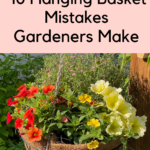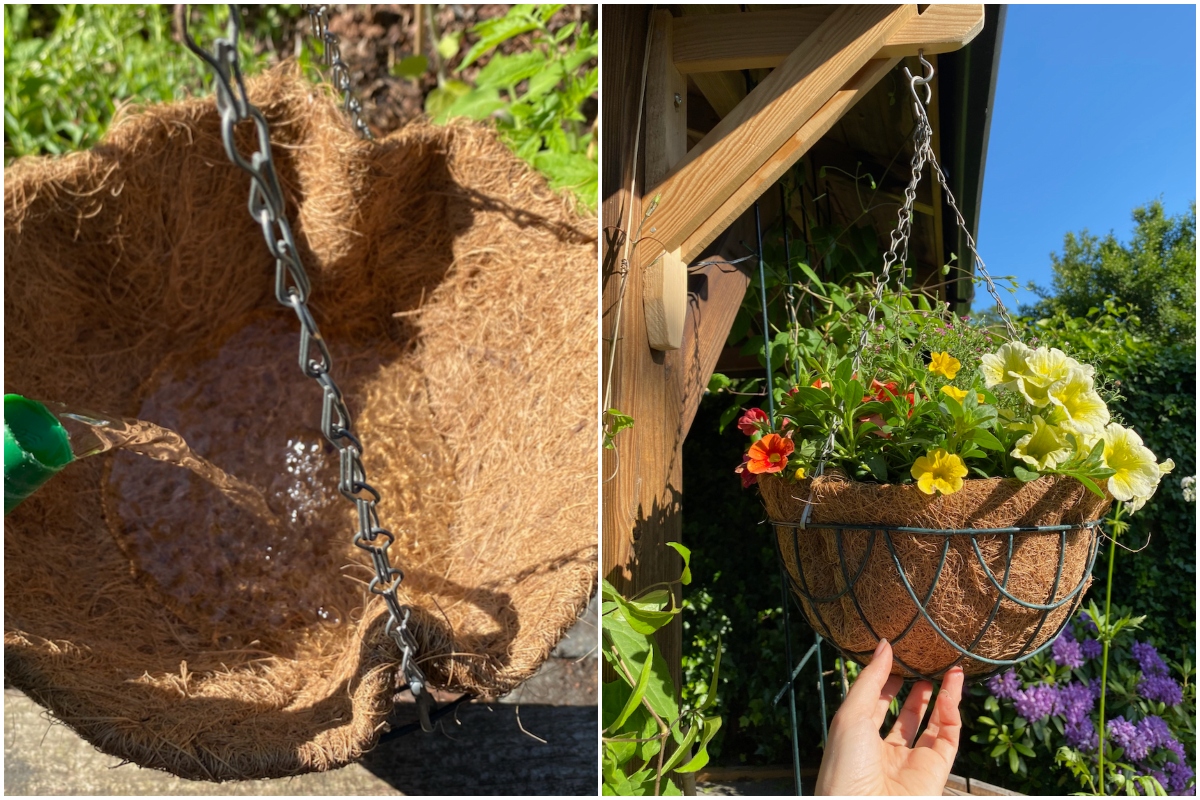
I was standing in the middle aisle of my local garden center holding a tray full of plants. After having spent the better part of fifteen minutes perusing the hanging plants section and imagining different plant combinations for a new hanging basket, I had picked a pleasing selection of the classic million bells (Calibrachoa) in various warm colors. I had also chosen a pre-mixed pot of petunia and verbena.
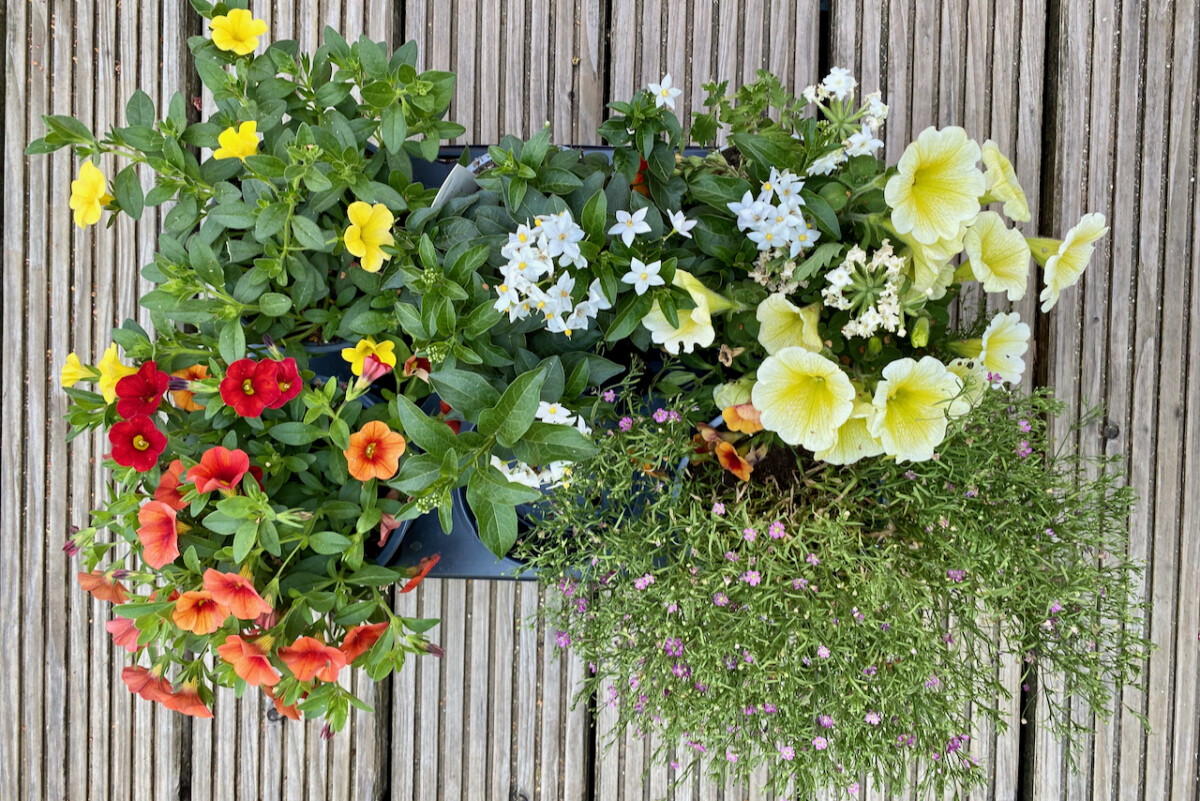
I was satisfied with my choices. Or so I thought. Because as soon as I set eyes on it, my hand reached for a gorgeous pot of Solanum jasminoides (also known as potato vine, although it has nothing to do with actual potatoes). Surely it will be the perfect addition to my hanging basket, right?
Let’s smoothly segway to the theme of this article: hanging basket mistakes. Because I had just made one by going off-script and buying a plant that would definitely not be suitable for that purpose.
Mistake #1: You’re choosing the wrong plants for hanging baskets.
Let’s start with the mistake that I was making. I went shopping armed with a list of plants suitable for hanging baskets. I didn’t ignore the list, or my previous knowledge of designing hanging baskets, but I thought I could improvise on the spot.
That’s how I ended up buying the potato vine, which is a climber, not a hanger plant. My mistake didn’t break the bank since the extra plant was quite small, but now I have to buy another large pot and find a suitable spot for the Solanum jasminoides. (Having to find ‘just one more pot’ seems to be a recurring theme in the life of a gardener.)
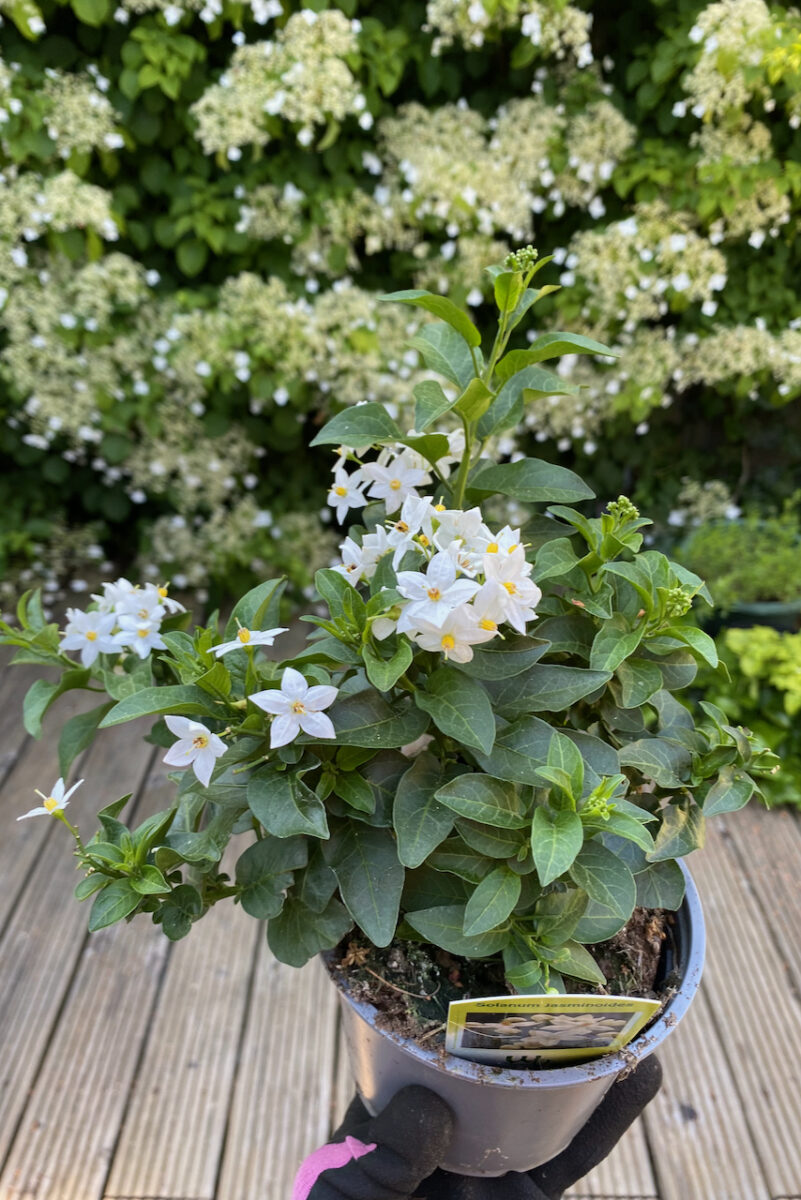
So before you put together your hanging baskets, make sure you add plants that are fit for this purpose. A few of the most popular plants for baskets include
- Petunia
- Million bells (Calibrachoa)
- Sweet alyssum (Lobularia)
- Impatiens (Impatiens walleriana)
- Moss rose (Portulaca grandiflora
- Pelargonium geraniums
- English ivy (Hedera)
- Burro’s Tail (Sedum morganianum)
- Trailing Pansy (Viola wittrockiana)
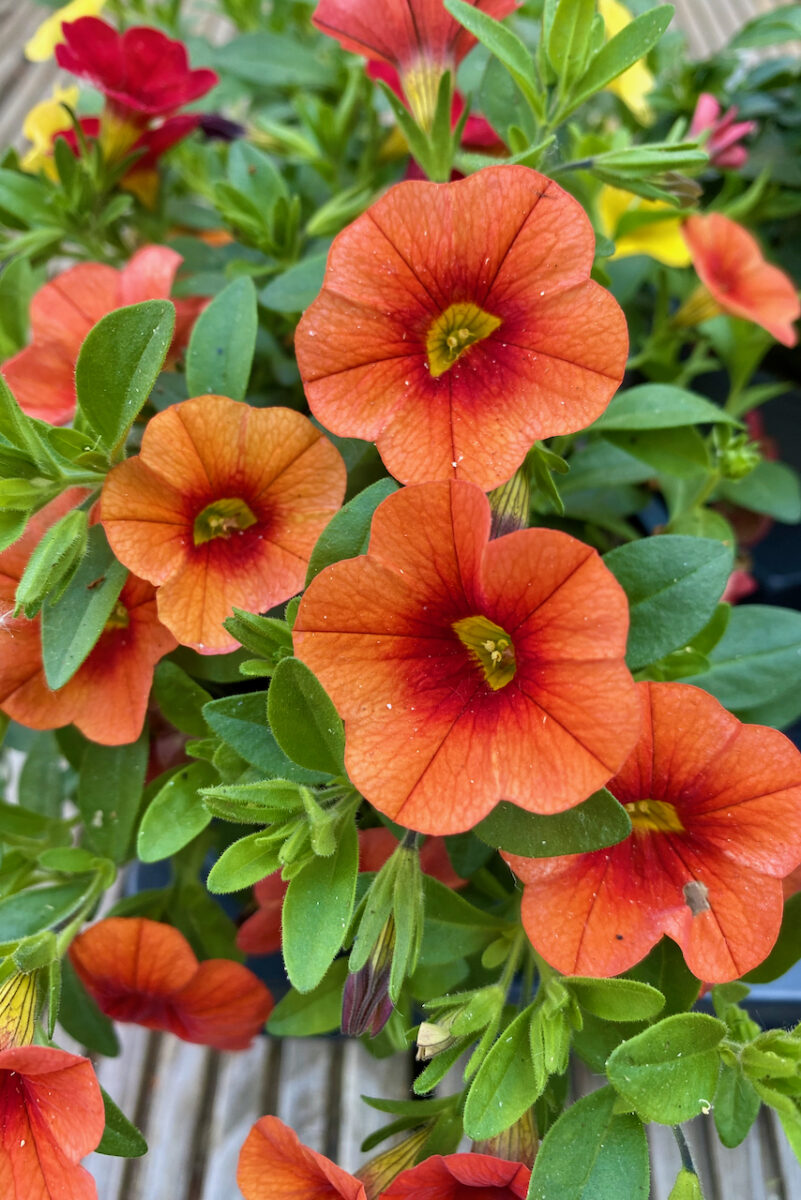
And while we’re talking about suitable plants, it’s best if you avoid using plants that grow too tall such as cornflowers, poppies and snapdragons. They will flop over in no time, unless you’re using a miniature cultivar.
Mistake 2: You’re using the wrong size basket.
I’ve worded this ambiguously (what’s “wrong” anyways?) because it’s very subjective. The “wrong” size could be one that’s too small for your plants and your climate. The trouble with small hanging baskets is that they dry out very quickly, especially if you place them in full sun. So if you’re not getting enough rain or if you’re planting thirsty plants, you might want to upgrade.
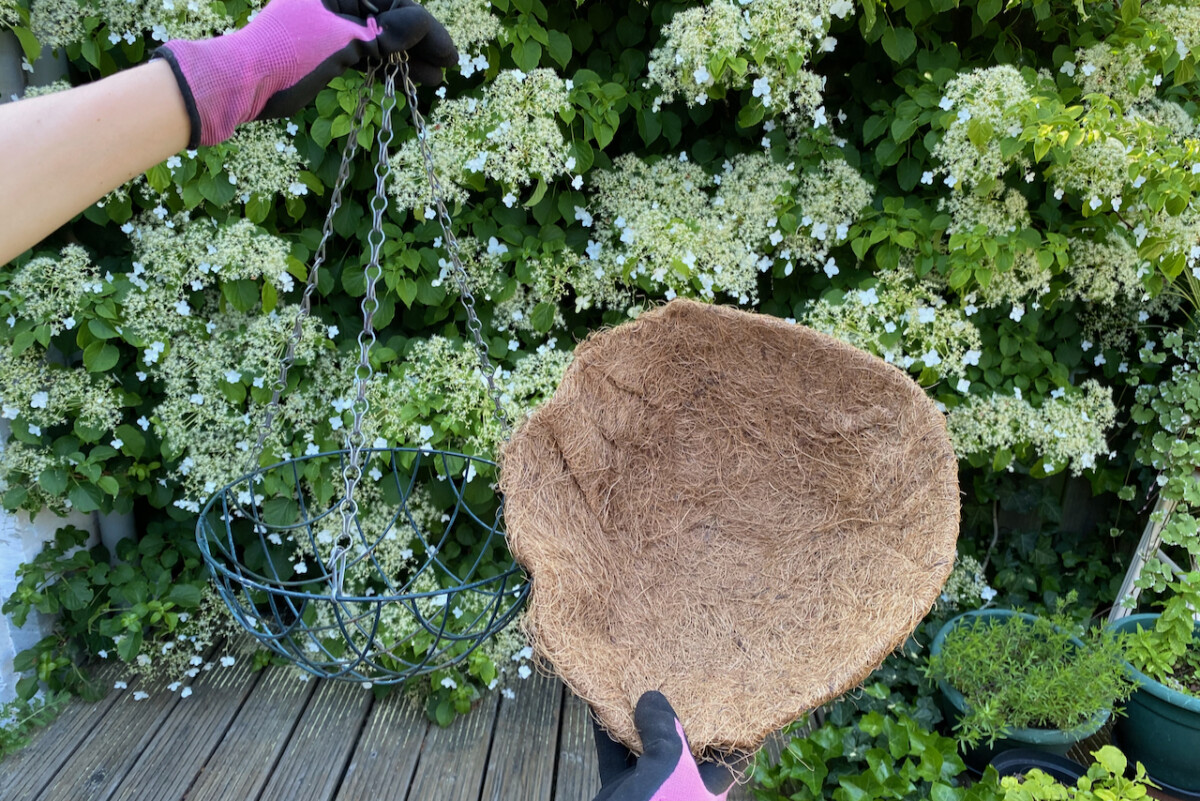
Another problem with using small baskets is that there’s no room for enough potting soil. Plants need soil to anchor their roots in, and poor root development will usually inhibit plant growth.
But if you only have space for a small basket, that’s better than no basket, right?
On the other hand, large hanging baskets are also a problem, due to how heavy they get when they’re saturated with water.
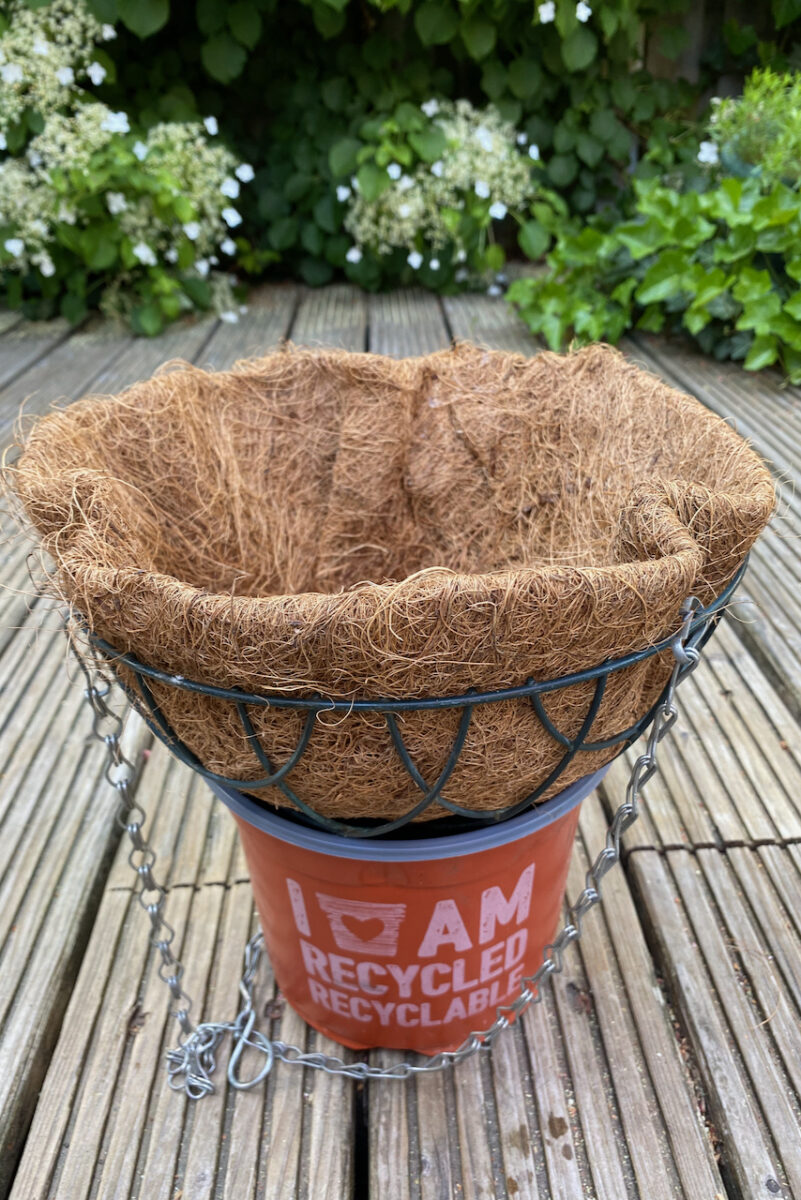
The basket that I’m planting this summer is mid-sized, about 15 inches (38 cm) in diameter at the top. It’s not too large to be a problem, nor too small to crisp up easily.
Mistake 3: You’re not lining your baskets.
Luckily, I haven’t made this mistake in a long time. But I do remember making it in a fit of frugal DIY years ago. I had found a super cute colander for a dollar and, with the help of some twine and a little knot work, turned it into a hanging basket.
No, I didn’t line the colander, why do you ask? As a result, all the water drained out as soon as I poured it. By the end of that summer, I was so done with watering that it put me off hanging baskets for years. You live, you learn, you line your baskets.
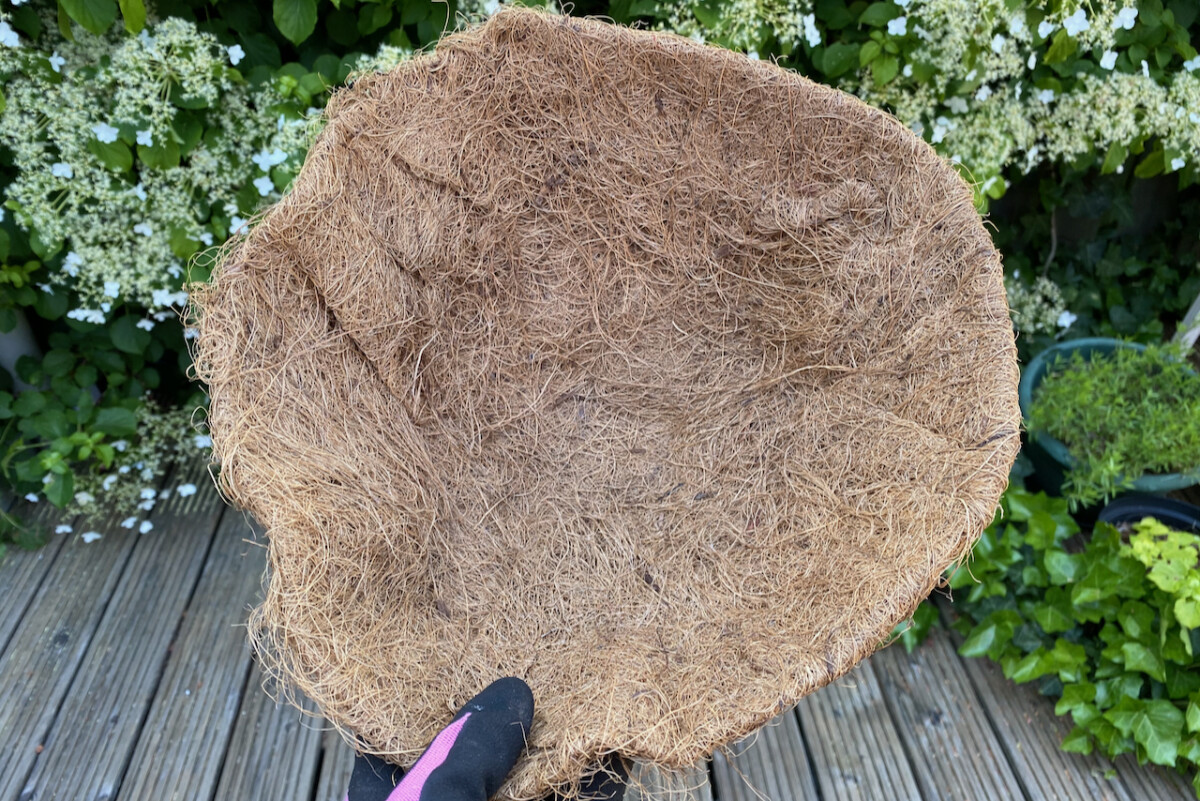
These days, I use coco coir mats to line my hanging baskets. Coco coir is a natural fiber and a byproduct of processing coconut husks. True, it comes with its own environmental impact since it’s imported from so far away. That’s why I make sure to treat it well and make it last. I clean it, dry it and store it indoors over the winter months. So far, I haven’t had to dispose of any of my older coir mats. But when the time comes, I’ll just compost them.
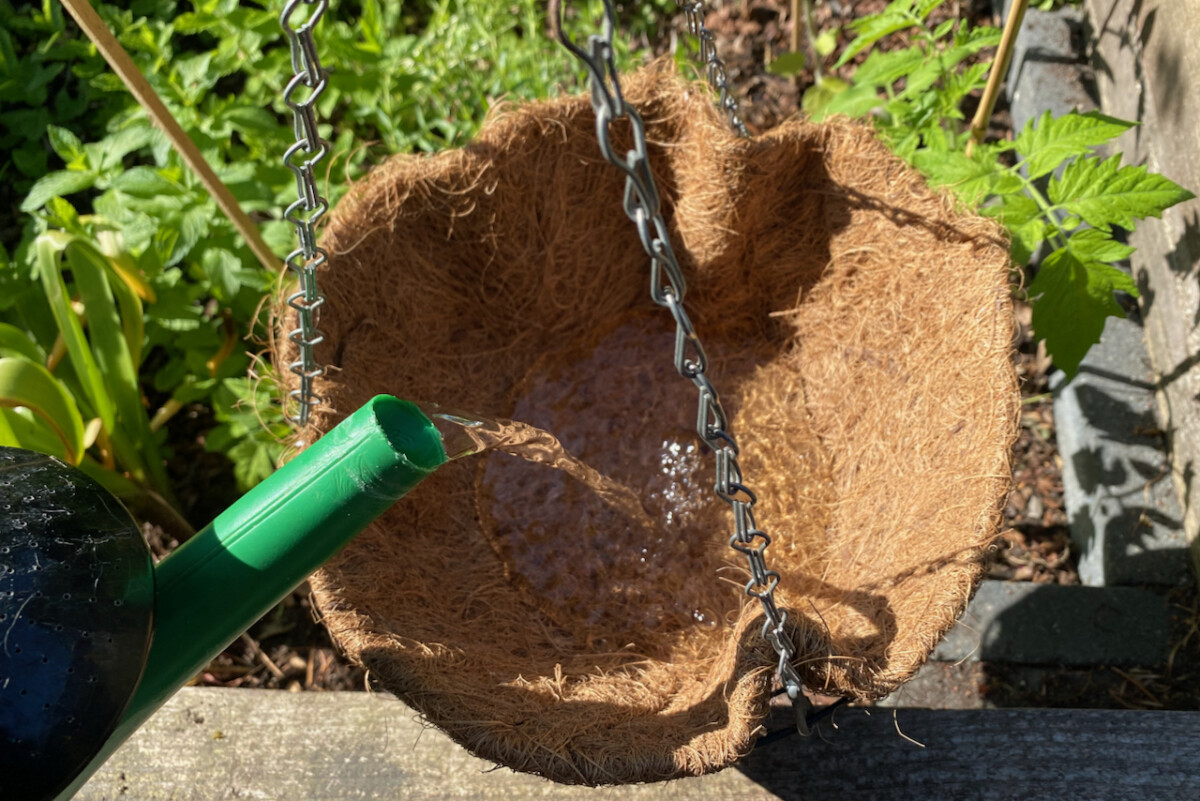
Coco husk mats are also very versatile. When I went shopping for this hanging basket, I couldn’t find the right size to match the wire basket I already had. So I just bought a larger mat, soaked it well to make it more malleable and creased it a bit to fit the basket.
Mistake 4: You’re not using enough potting soil.
First, let’s make this clear. You have to use potting soil for containers. You should avoid using pure compost or soil from your garden. But make sure you use enough soil for the size of the basket.
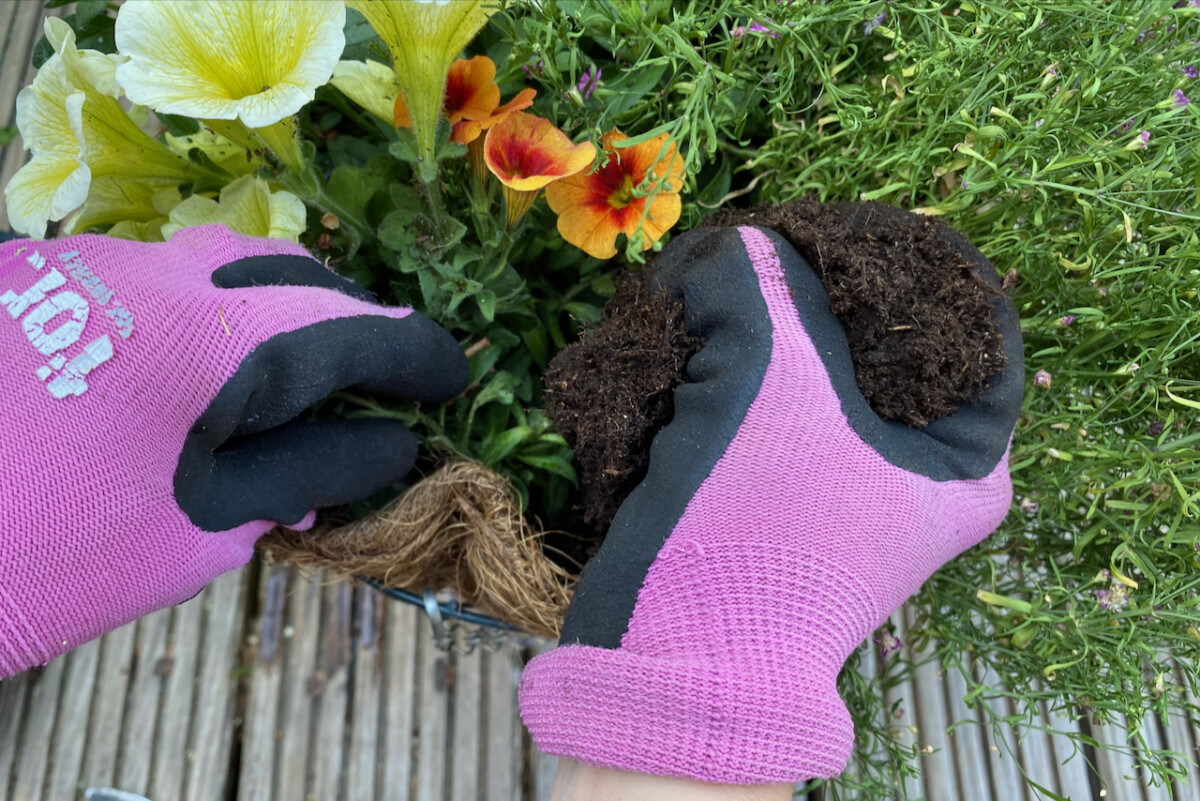
Remember that the potting soil will be more compacted due to gravity playing its part. As the basket sways in the wind and gets rained on, the potting soil will compress, leaving some room at the top. Make a note to check the soil every month or so and top it up, if needed.
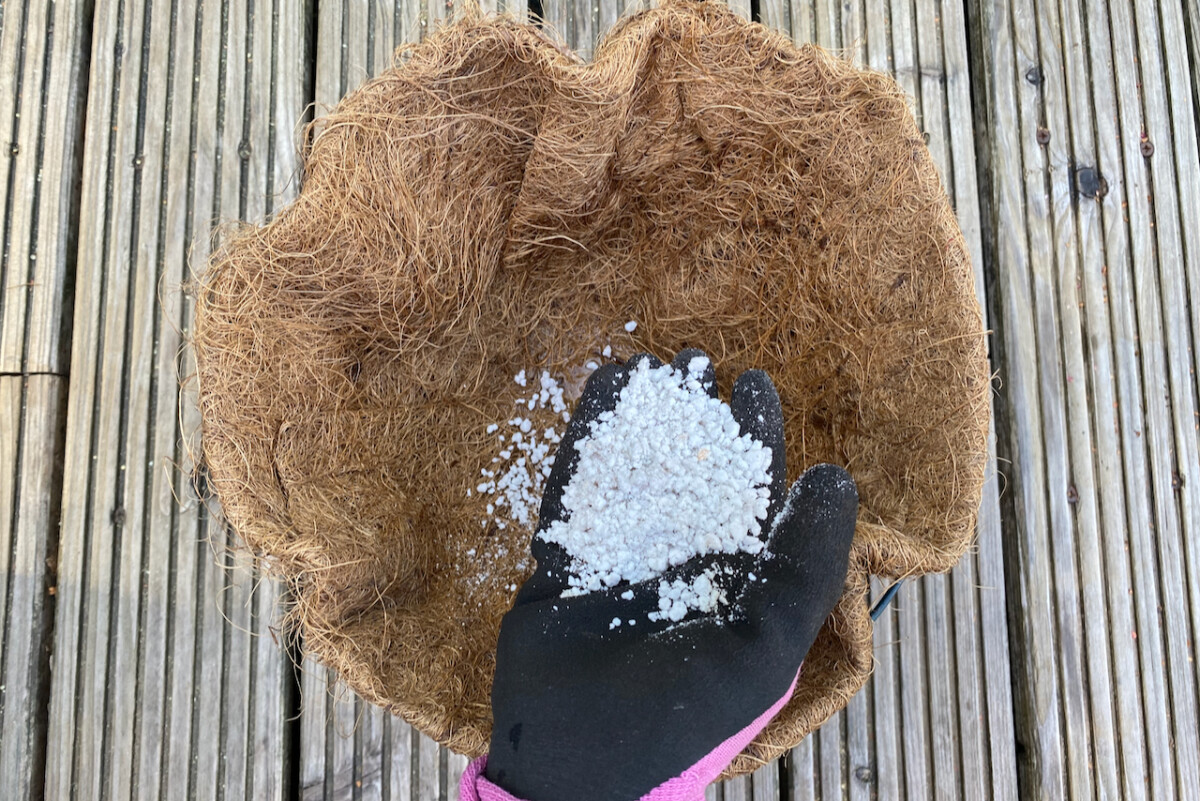
I try to prevent compaction, as much as possible, when I’m planting the hanging basket. I do this by adding a handful of perlite (or any other material that improves aeration) to the bottom of the basket before I add any plant to it. I then mix the perlite in with a light layer of soil.
Mistake 5: You’re letting the hanging baskets get too dry.
This could be a result of forgetfulness (it sometimes is, for me). But it could also be the result of a combination of mistakes 2, 3 and 4. A small unlined hanging basket with little soil in it will dry up faster.
I’ve found that this also happens when the basket is placed in a location that isn’t very accessible, either because it’s too high, too out of the way or too far away from the other plants that you’re watering.
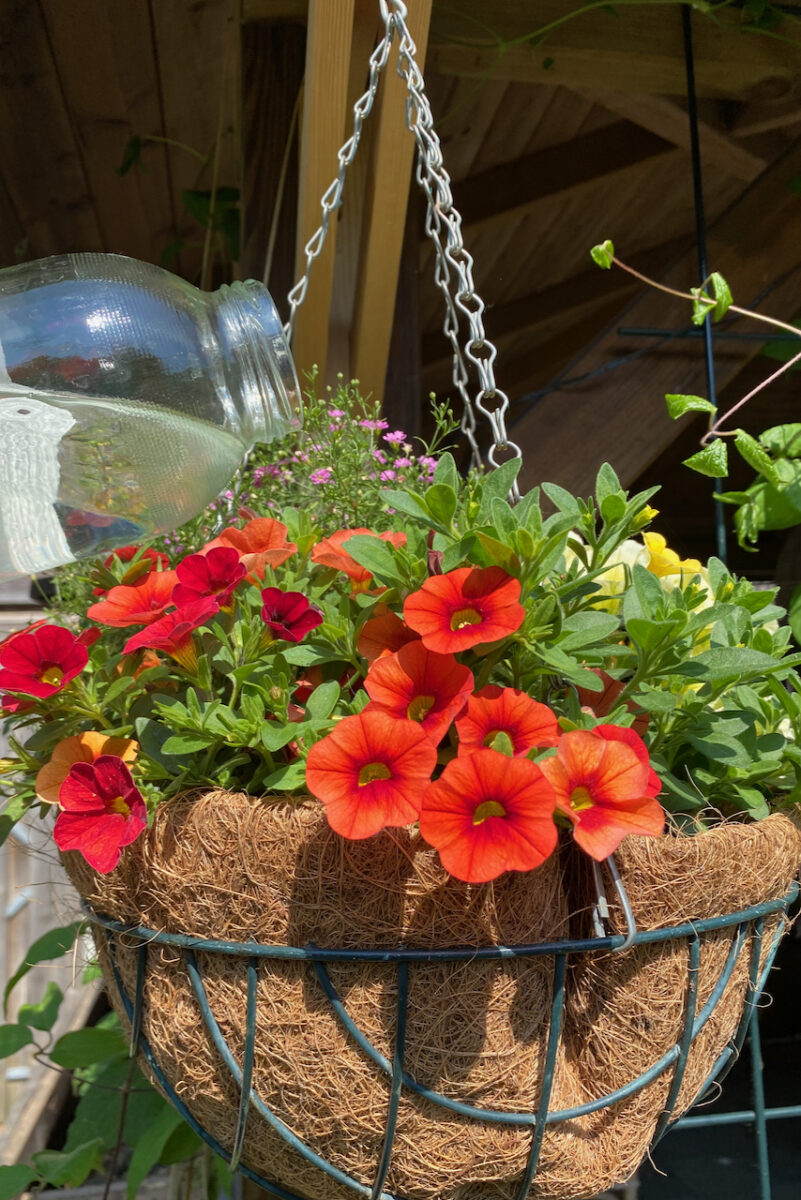
As someone who’s not very height-endowed (aka, I’m short), I made sure to place my hanging baskets somewhere I could easily reach to water them. I won’t lift a watering can above my head, of course; but I can comfortably reach the baskets while holding a bottle of water.
Mistake 6: You’re hanging your plant baskets in the wrong place.
We’ve already touched upon this, so let’s talk about a few more scenarios that we should try to avoid when hanging containers full of plants.
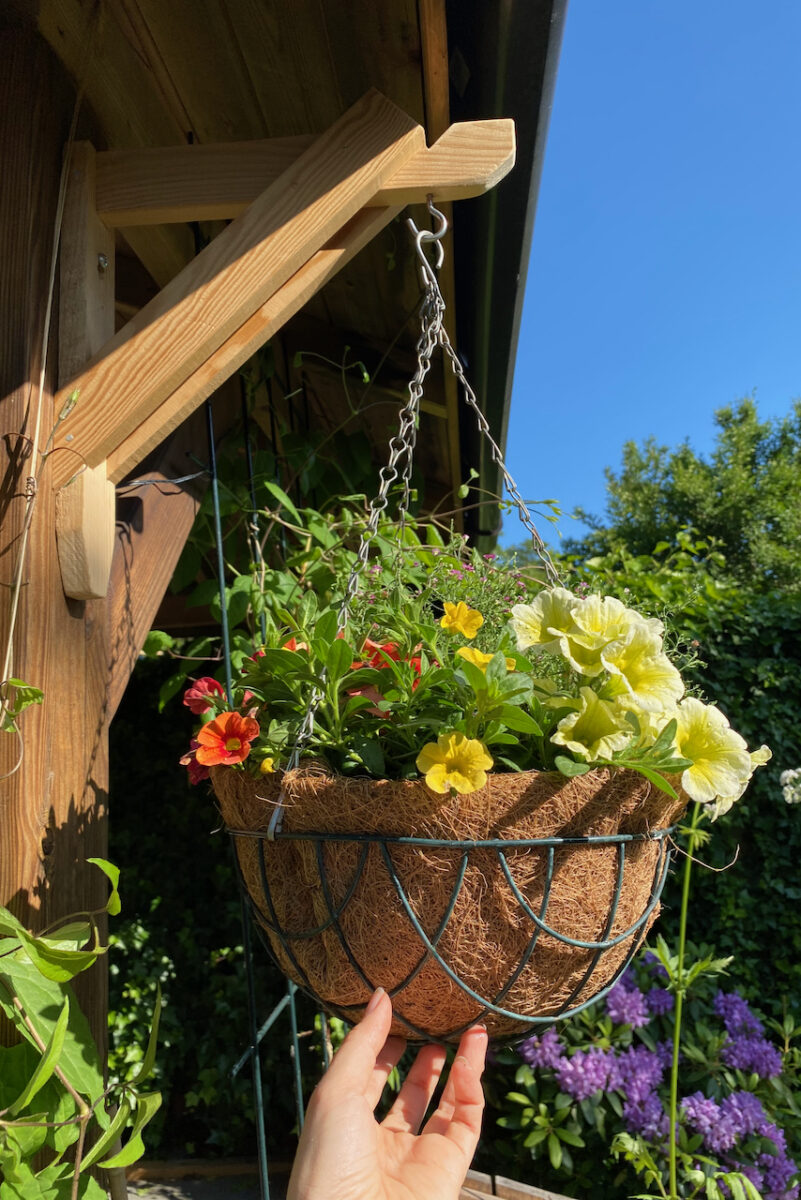
Avoid placing baskets right below a gutter that’s prone to overflowing in a summer storm. Avoid spots where the container will sway in the wind too much. Finally, keep baskets away from high-traffic areas where you might just bump your head on them.
Mistake 7: You’re cramming the plants too much.
There are two ways to make this mistake. I almost made it by literally adding too many plants to the arrangement before I realized that the potato vine wouldn’t be suitable for a hanging basket.
Another reason we’re cramming too many plants is because we’re not taking into consideration the size of the mature plants. This is a common pitfall when we’re creating hanging baskets with starter plants early in the season.
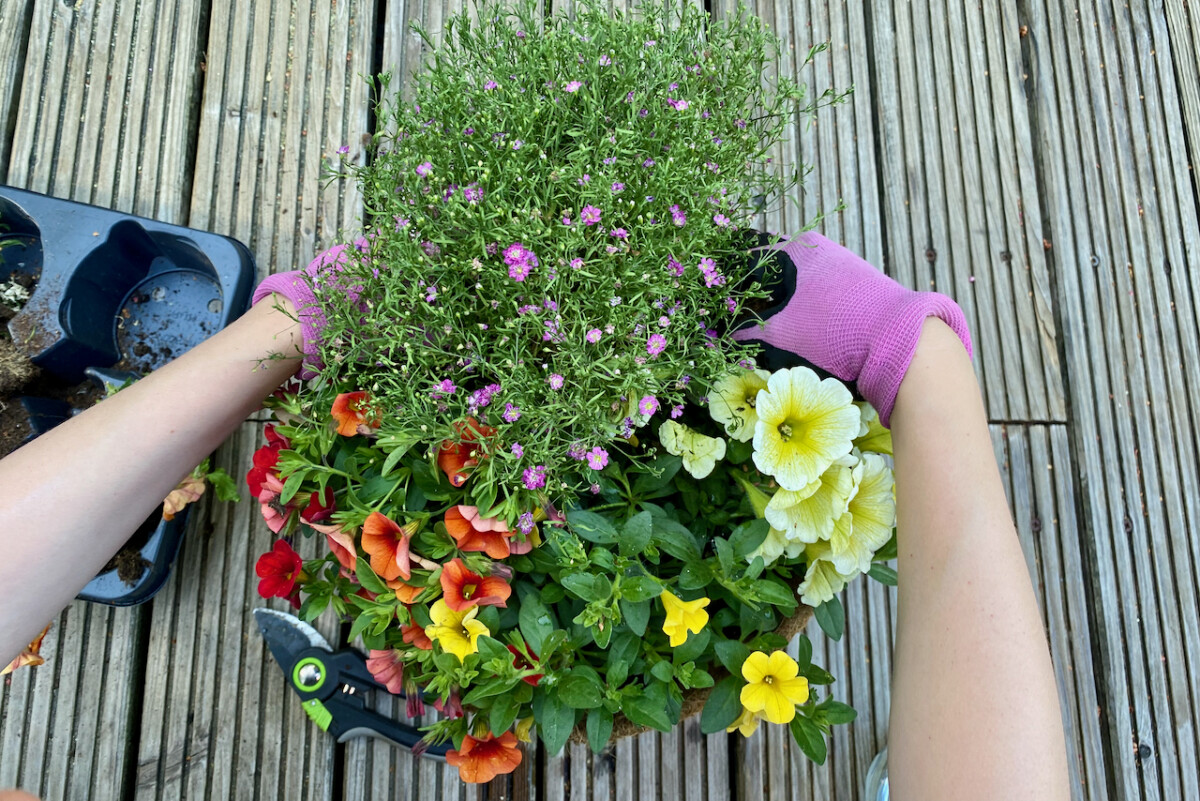
Keep in mind that most plants will grow and expand a bit more when they reach maturity. Luckily, there’s enough room in hanging baskets for the plants to spill sideways by design. But the better you plan to optimize your space, the longer your container will look fresh and full.
Mistake 8: You’re not maximizing the space.
The reverse of the mistake I mentioned above is not maximizing the space available. When I was planting my basket, I first thought that I wouldn’t have enough room for the pink baby’s breath (Gypsophila). However, the plant was so full of buds just waiting to open that I knew I had to fit it in.
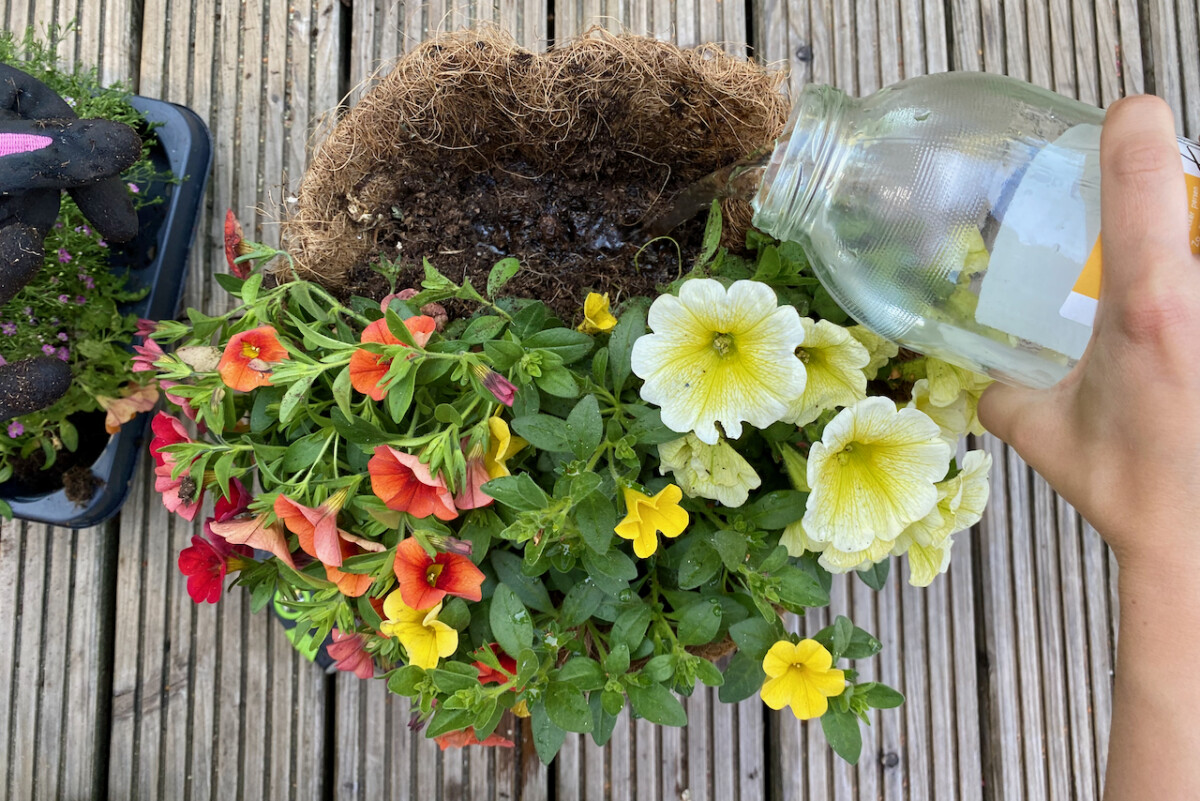
First, I watered the basket to settle the soil. Then I carefully chipped away at some of the soil around the roots of the baby’s breath. After placing it into the gaps in the basket, I watered again. Finally, success! The gypsophila fit perfectly.
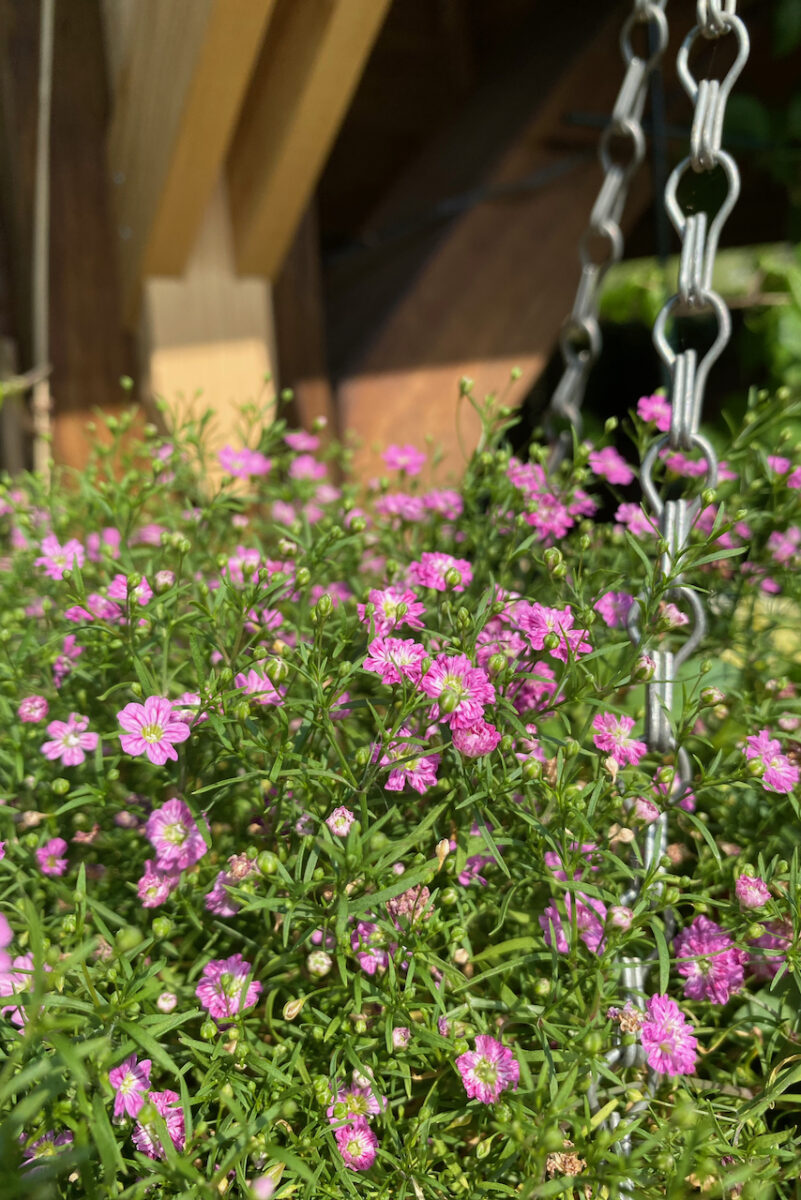
Mistake 9: You’re not pruning, trimming or deadheading.
Just like regular flower pots, hanging baskets also need a bit of a tidy up every now and then. We’ve all seen baskets that look a little bit worse for wear at the end of the season. But don’t wait until the season is over to do some light maintenance. Take down the container every month, rotate it around and do some pruning and deadheading.
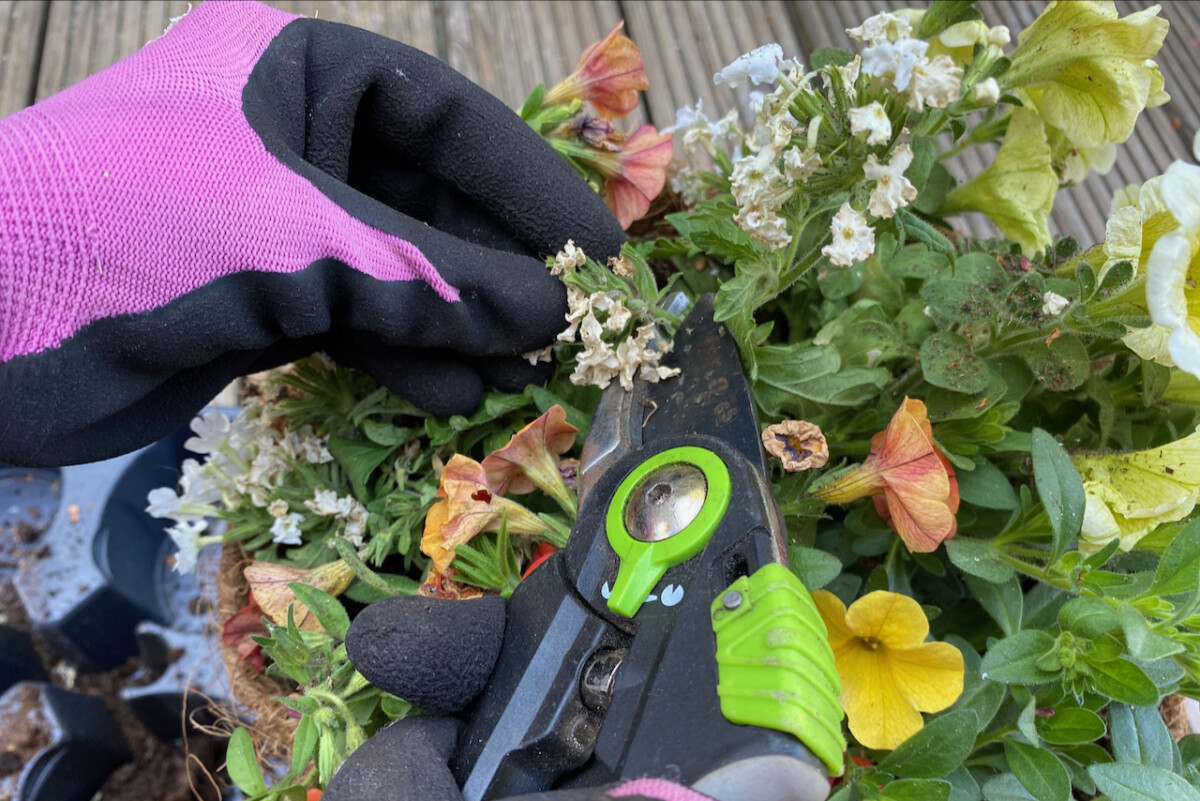
In my basket, the verbena that came in the same pot as the bright lemon petunias needed a haircut soon after planting. I deadheaded all the spent flower heads, but left most of the verbena plant in the basket to bloom again. I also pick million bells flowers that have dried out to encourage the plant to bloom even more.
Mistake 10: Putting too much weight on your hook.
This often happens when you upgrade the basket but don’t upgrade the hanging mechanism. So while a small planting basket might hang safely enough on a smaller hook, the larger and heavier the basket, the sturdier the hook needs to be.
I was planning on placing this basket in our small gazebo, but hanging the container on a cross beam would leave it either too far in the shade or directly in a walkway path. So in order to hang it at a corner post, we needed to make a wall-mounted arm hanger.
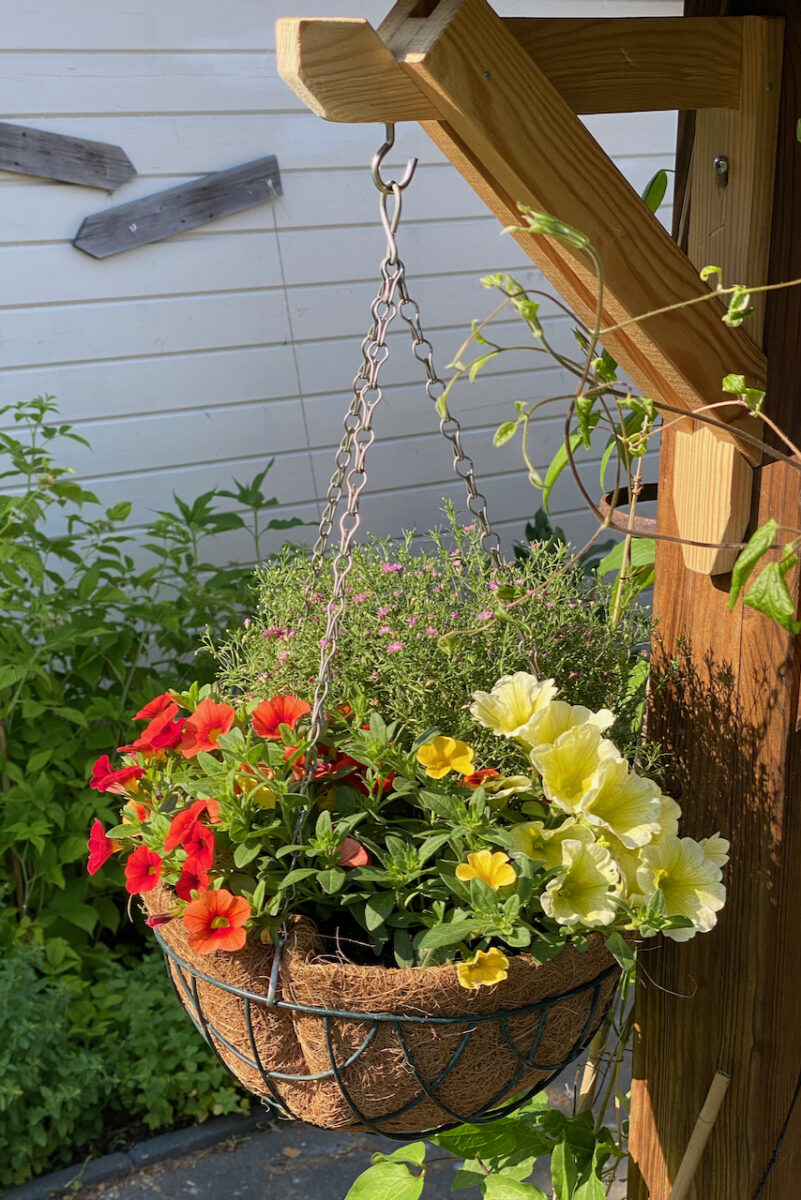
There are many of these for sale, some made of iron or aluminum; but with plenty of scrap wood and hardware lying around, it seemed like a waste of time and money to go out looking for the perfect hanger.
With just a few short pieces of wood, a few finishing nails and a screw hook, we fashioned a sturdy wooden arm. The triangle shape gives it plenty of strength to handle the basket while reaching out just enough to give it some space to swing.
I talked a lot about mistakes in this article, so it may sound like you might as well not bother with hanging baskets. I think making mistakes is one of the best ways to learn about plants and gardening. So go ahead and plant that hanging basket. You have all summer long to enjoy the fruits of your creativity.

